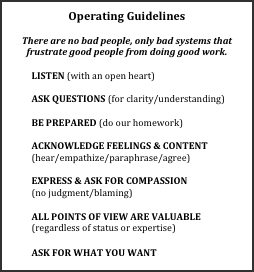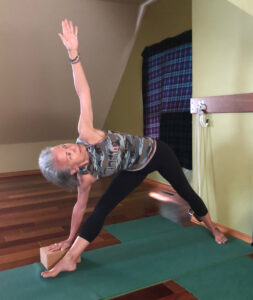In today’s rapidly changing iVUCA (interconnected, volatile, uncertain, complex and ambiguous) world, the art of building relationships in order to co-exist in community is fundamental for both surviving and thriving. Global agreement, in principle, supports “the quantity and quality of social relations” as a key indicator of our happiness. Now, we just need to get our act together by allowing our behaviours to catch up with our beliefs. As Henry Ford (1863-1947) so aptly put it, “Coming together is a beginning; staying together is progress; working together is success.”
Whether we find ourselves in a family, an organization or a network of nations, the complexity of our everyday lives typically requires the able assistance of others. As a ‘solo’ entrepreneur for over 25 years, I can attest to this reality. In the earlier years of my career, I chose to collaborate with others for the sole purpose of thriving (learning, growing and creating). In the latter 5 to 10 years, collaboration has also become instrumental to my survival (sustenance, well-being and adaptation) with the once clear boundaries between survival and thriving disappearing. Without the collaboration of a 30-something, logical, high-tech wizard and a love-to-learn, creative explorer/retiree now website manager, it would have taken me three to five years (instead of one) to publish and populate my current website.
Building the relationships that enable us to survive and thrive has become the complex activity of living. It has also meant bringing an end to isolation (disengagement), exclusion (secrecy) and even competition (win-lose). At both personal and professional levels, these endings mean learning new behaviours to support our new beliefs. As an example, my Sociotechnical Systems Roundtable (STS-RT) collaborative writing team (Doug Austrom, Don de Guerre, Craig McGee, Bernard Mohr, Joe Norton, Carolyn Ordowich and I)* are refining our own ‘behavioural’ model — Connect?Converse?Collaborate?Co-create?Community. This model or dialogue process incorporates STS values for, in Ford’s words, beginning, progressing and succeeding at collaborative design of adaptive enterprises.
A Dialogue Process© for Adaptive Enterprise Design:
Connect. To begin any collaboration, there is a starting point for connection often based on mutual interest — a common goal, purpose or vision. This act of ‘coming together’ might occur through initial conversation with colleagues or the formation of a new project in one’s place of work or even the opportunity to redesign one’s ‘workplace’. Often the focus is on a particular task, however, equally important is the ‘quality and quantity of relationship’, which necessitates cultivating a sense of safety, self-awareness, belonging and acceptance among collaborators.
Connecting marks a new beginning, and therefore is fraught with ambiguity, uncertainty and insecurity. From an organizational perspective, a relationship-task tool for building ‘connective tissue’ is an environmental scan which, when conducted by staff, will bring forth both internal strengths and vulnerabilities and external opportunities and threats for consideration by the system under study. This gathering of information provides a data pool from which dialogue increases awareness, understanding and agreement on design choices.
Converse. Conversations that move beyond assumptions and dig deeper for greater understanding and agreement on task and relationship parameters begin building the foundation for collaborative enterprise design. Initial success in describing and getting agreement on these parameters are the ‘small wins’, which build the skills, commitment and confidence for more contentious challenges down the road. An example (see below) of a dialogue tool for establishing relationship parameters is the creation of behaviours or operating principles that all agree to adopt and practice.
Collaborate. ‘Staying together’ beyond the initial encounter is achieved when collaborators understand how their differences are complementary and desirable, and how these strengths can best be exploited by aligning them with the required roles and tasks. In designing an organization, this would be accomplished through staff collectively analyzing the requirements and functioning of both its technical and social systems. Some of these dialogue tools include —
• Variance analysis
• GAIL and/or QWL Survey
• Ethnographic research
• Skills matrix of competencies & capabilities
• Process & network mapping
Co-create. ‘Working together’ successfully occurs when collaborators continue to practice the new behaviours and agreements while recognizing that the mistakes they make are really opportunities to learn better ways. In the co-creation phase, collaborators utilize their strengthened relationship ties to think ‘outside of the box’ in order to design new processes and systems better equipped for their shared purposes. Some of the processes that get designed are —
• core work
• continuous improvement
• innovations
• customer experience
• shared governance
• rapid prototyping of new designs
• alliance & structural mapping of the system
• shared value proposition
• deliberations
Community. As a social species, one could say humans are programmed to seek community, particularly when our membership allows us to contribute meaningfully. Recently, while consulting in a software development firm, this desire to belong in community was clearly demonstrated. Although one of the design options for organizing was ‘home offices’, this introverted staff chose an open space, face-to-face workplace design. For them, the rewards of camaraderie and creativity far outweighed the costs of reduced privacy. Their continued success at working together deepened the community bonds of cohesion, insightful decision-making, impact, productivity, innovation and interdependence.
Processes for organization design at this phase include —
• implementation of a final design choice
• continuous renewal
• evolution
As a dialogue process for designing adaptive enterprises, connecting, conversing, collaborating, co-creating and ultimately building community are analogous to the team development stages of forming, storming, norming, performing** and transforming. The difference between building communities and teams is the former’s increased complexity as measured by the ‘quantity’ of relationships with their diversity of values, interests and viewpoints.
As our experiences of community continue to move us into larger networks of relationships (think online social gathering places), our challenge becomes one of navigating for meaningful camaraderie and creativity rather than a sense of becoming lost in the overwhelming masses. A clear indicator for me of the latter is when intimacy is lost. Intimacy implies closeness. We accomplish closeness not through physical proximity but instead through emotional awareness and understanding. And how do we realize emotional awareness and understanding? By taking the risk of self-disclosure –
intimacy = in-to-me-see.
Test out each of your community’s capacity for in-to-me-see by asking yourself, “Does my experience here allow me to disclose, be understood and evolve?”
Sources:
*STS-RT Adaptive Enterprise Team. 2012. Sociotechnical Systems Design for Adaptive Enterprises, Paper presentation, Organization Design Forum, Atlanta, GA, April.
**Weber, Richard. 1982. The Groups: A Cycle from Birth to Death, The National Training Laboratory (adaptation from their 4-stage model).





